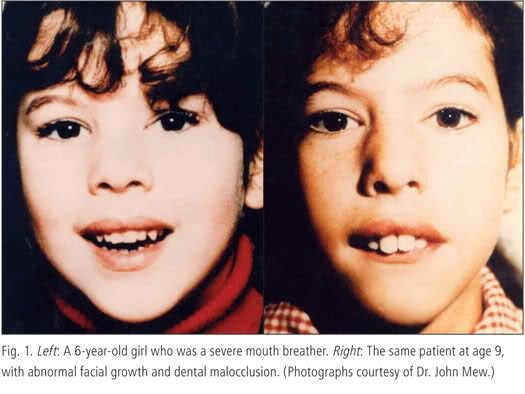How Your Breathing & Diet Shape Your Face (and What to Do About It)
When we think about breathing, we often associate it with oxygen intake, relaxation, or athletic performance. But what if your breathing habits and diet were actually shaping your face?
Research from leading experts like Dr. John & Dr. Mike Mew, Dr. Steven Lin, Dr. Mark Burhenne, and Dr. Belisa Vranich reveals that modern lifestyle habits: like mouth breathing and soft diets, are reshaping our jaws, airways, and overall health.
The Problem: Why Do Some Faces Develop Differently?
Humans didn’t always struggle with crooked teeth, narrow jaws, or breathing issues. Before the Industrial Age, our ancestors spent an estimated six hours a day chewing tough, fibrous foods—a critical factor in developing strong jaw muscles and wide facial structures. In contrast, today’s soft, processed diets require far less effort, leading to underdeveloped jaws and restricted airways.
Additionally, mouth breathing—often due to allergies, poor posture, or habit—exacerbates these issues. It alters tongue posture, prevents proper jaw expansion, and can even impact facial symmetry. Studies show that tribal and ancestral populations, who breathe through their noses and eat harder foods, rarely experience these problems.
What Experts Say About Breathing & Facial Development
✅ Dr. John & Dr. Mike Mew (Orthotropics) – Emphasize that proper tongue posture, nasal breathing, and chewing tough foods are essential for developing a strong jaw and open airway.
✅ Dr. Steven Lin (Functional Dentist) – States that "your breathing habits influence your dental health as much as brushing and flossing do."
✅ Dr. Mark Burhenne (@AskTheDentist) – Highlights the impact of mouth breathing on sleep quality, oral health, and facial growth.
✅ Dr. Belisa Vranich (Breathwork Expert) – Warns that children begin to develop dysfunctional breathing habits between ages 5-10, reinforcing the importance of early intervention.
Signs of Poor Breathing & Facial Development Issues
Mouth breathing (especially during sleep)
Crowded or misaligned teeth
Narrow jaw and recessed chin
Forward head posture
Frequent snoring or sleep apnea
What Can Be Done & resources to learn more
While breathwork can help optimise airway function, oxygen efficiency, and nervous system regulation, experts in myofunctional therapy and orthodontics recommend specific interventions for proper facial and airway development:
💡 Expanders & Orthotropics: Devices and techniques that encourage jaw expansion in children and even adults.
💡 Myofunctional Therapy: Exercises that strengthen tongue posture and breathing mechanics.
💡 Dietary Adjustments: Incorporating tougher, whole foods to strengthen jaw muscles naturally.
💡 Breath Training: Improving CO₂ tolerance, reducing over-breathing, and ensuring nasal dominance.
📖 Recommended Reads:
📘 "Nutrition and Physical Degeneration" – Weston A. Price
📘 Jaws: The Story of a Hidden Epidemic – Sandra Kahn & Paul Ehrlich
🌍 Follow @primalbreathwork for more insights on breathwork, posture, and optimal health!
Want to Take Your Breathing & Health to the Next Level?
🔹 Join a Primal Breathwork Workshop – Experience guided breathwork techniques that improve oxygen efficiency, nervous system balance, and overall well-being. Upcoming workshops
🔹 1:1 Breathwork Coaching – Get a personalised approach to breath training tailored to your specific needs. Book a consultation to explore how breathwork can transform your daily life. Consultation call or contact me
💡 Want a full immersion? Join us at the Beyond Breath Retreat (May 2025) – a transformative 5-night experience designed to help you unlock the power of breath, movement, and deep self-connection.
🚀 Early Bird Offer Now Open! Apply now: www.beyond-breath.com





